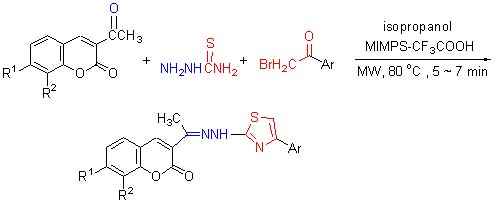

Chinese Journal of Organic Chemistry >
Microwave-Assisted Ionic Liquid Catalyzed One-Pot Three-Component Synthesis of 3-{1-[2-(4-Arylthiazol-2-yl)-hydrazono]ethyl}-2H-chromen-2-one
Received date: 2011-02-26
Revised date: 2012-06-01
Online published: 2012-05-12
Supported by
Project supported by the Science and Technology Department of Hebei Province (No.11276434) and the Science and Technology Bureau of Baoding City (No.10ZF104)

Zhang Dongnuan , Li Jitai , Liu Huimin , Song Yali , Zhang Yingqun , Yuan Mingyue . Microwave-Assisted Ionic Liquid Catalyzed One-Pot Three-Component Synthesis of 3-{1-[2-(4-Arylthiazol-2-yl)-hydrazono]ethyl}-2H-chromen-2-one[J]. Chinese Journal of Organic Chemistry, 2012 , 32(9) : 1732 -1735 . DOI: 10.6023/cjoc1202261

/
| 〈 |
|
〉 |